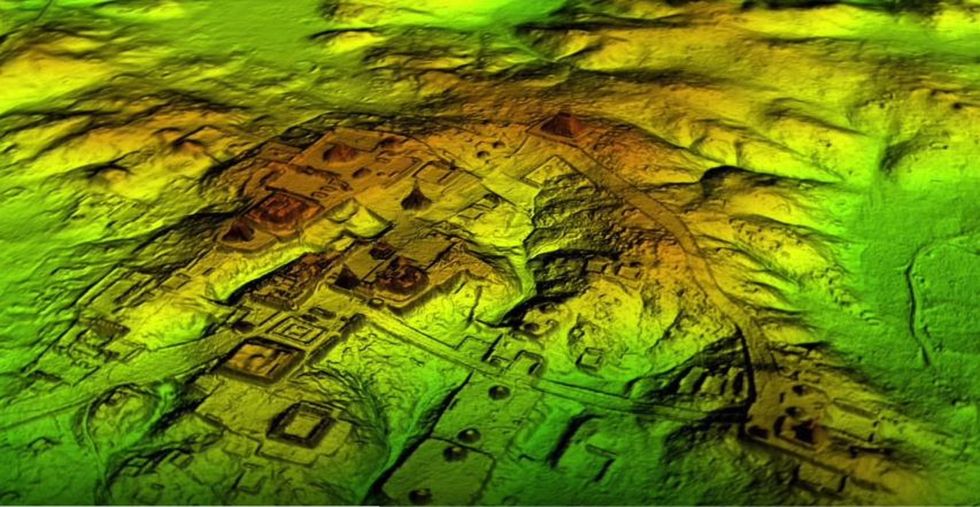Earlier this month, researchers in Guatemala discovered previously unseen remains of Mayan cities preserved within the depths of the Guatemalan rainforest. Using LiDar (Light Detection and Ranging) technology, researchers riding an airplane fired laser pulses down towards the forest at incredible speeds. The lasers returned measurements that were ultimately compiled into a full picture of structures hidden below the dense layer of trees.
The shocking image revealed over 60,000 Mayan architectural structures buried in the forest, constituting whole cities. The site was replete with interconnected watch-towers and highways, raising the possibility that the Mayan civilization was far more architecturally and technologically advanced than previously believed.
Yet what is more shocking is that researchers have scoured the area by foot for many years, but the archeological remains were so covered in thick foliage that they were virtually undetectable to the human eye. It was only with LiDAR that the discovery was made possible.
In relation to this, Thomas Garrison, one of the lead researchers on the project, says, “It’s very humbling. For those of us that spent our lives mapping and slogging around this area…you just sort of have to bow before the LiDAR and accept the fact that it’s better than you are.”
I was captivated by Garrison’s words here. Almost immediately, I was taken back to what my Introduction to Computer Science professor said on the first day of lecture. The professor, while explaining some background and history of the field, proudly declared, “Technology is the closest thing we have to magic.”
His words struck me particularly close to heart. Growing up, I was always been fascinated by magic and disappointed that the world around me seemed so devoid of it. Although I drank the tap water from my kitchen sink every day, it never gave me immortal, supernatural abilities. I was an avid fan of Harry Potter, yet my time in Frank R. Conwell Middle School Number Four was never as adventurous nor as eventful as the years Harry, Ron, and Hermione spent at Hogwarts School of Witchcraft and Wizardry. And no matter how much time I spent curled up in the back of my closet, playing with my toys, there appeared no slightly chilly breeze drawing me towards an invisible doorway into the land of Narnia.
So, then, was magic only in books and movies? For the longest time, it seemed so.
But as I grew, all that changed. What I discovered was that magic was everywhere, concealed in forms I had never opened my eyes to.
My flight across the world was magical. I levitated thousands of feet above the ground, high enough to meet the gaze of the puffs and wisps of silvery clouds that surrounded me. Taking the time to feel the beauty of the empty skyscape or the sight of the city lights from above, I felt no different than Aladdin riding a flying carpet around his whole new world.
Magical, too, was the 3D-printer in my friend’s laboratory, which could build objects from where there were none before; perhaps a genie, granting a wish.
And magical certainly must be the moment earlier this month when lasers, like spells cast upon the thick, towering greenery of the Guatemalan rainforest, revealed a secret beneath: an ancient civilization, immense, immaculate.
What had preserved the structure of this architectural vision from the toxicity of human activity for so many centuries?
It must be a force akin to magic, indeed.

















